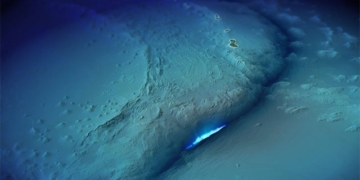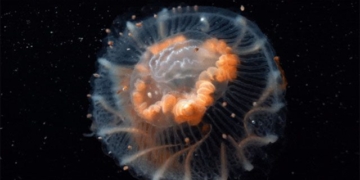In fact, this is an extremely rare and difficult-to-catch fish species, which is why not everyone gets to see them in their lifetime.
Joe Chmeleck, a seasoned fisherman from Alaska, USA, goes fishing daily on his fishing boat. However, due to increasing fishing restrictions, he can only fish to relieve stress and pass the time.
At the end of last month, while fishing in the waters of Alaska, he accidentally caught a fish about 30 cm long, with very bright colors, featuring a deep orange base adorned with bright orange, red, and green spots. Joe Chmeleck had heard of this species, known as the greenling (Hexagrammos lagocephalus), but this was the first time he had seen it in person. From its appearance, the fish seemed quite ordinary, but when he filleted it, Joe Chmeleck was taken aback and began to wonder: Why is the flesh of this fish bright green? The color was as if someone had deliberately dyed its meat.
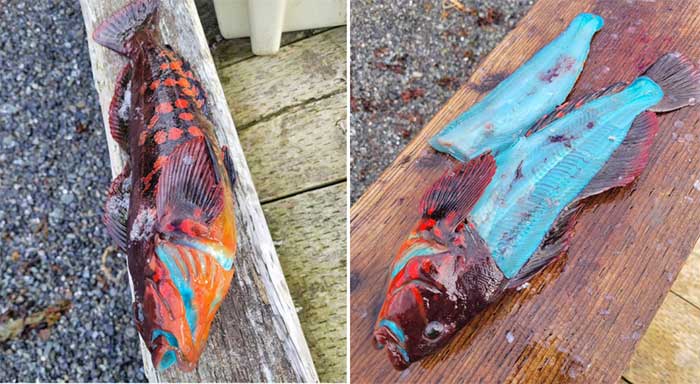
According to many wildlife records from the United States, the greenling, also known as Hexagrammos lagocephalus, is a species of ray-finned fish commonly found along the northern Pacific coast, from the Point Conception Marine Reserve in California to the Bering Sea in Alaska. (Image: Nypost)
Joe Chmeleck stated: “I had never heard that greenling was inedible, but I also don’t know anyone who has eaten its flesh.” However, when Joe Chmeleck fried the fish, he was surprised to find that the blue flesh turned white after cooking! And it tasted very similar to regular salmon. He then posted the entire footage on his social media, where netizens expressed their astonishment.
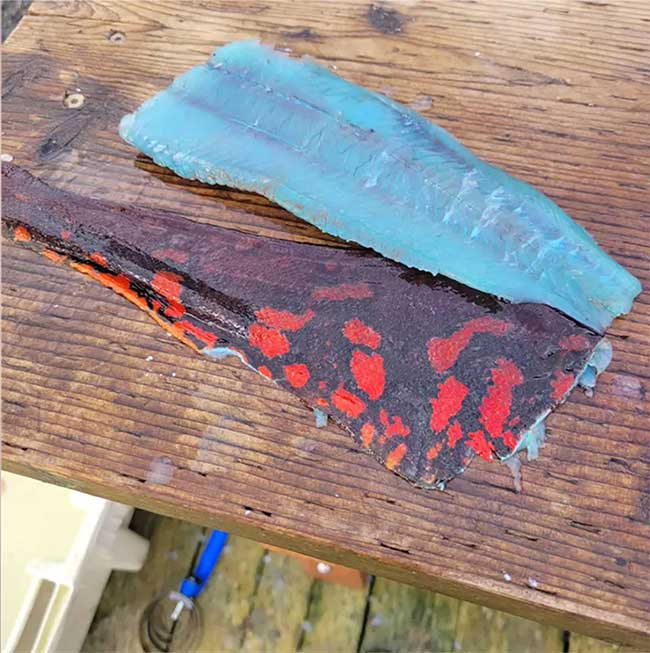
This species has dark scales with a “spotted” pattern, which can be brown, red, orange, or green, allowing them to blend with rocky environments. (Image: Wsfa).
After learning about this incident, the Alaska Department of Fish and Game released a statement indicating that they could not currently advise whether the greenling is edible, as the agency has not successfully collected enough samples to determine the mercury content in its flesh. In other words, this species is too rare and difficult to catch, so they have not been able to gather sufficient information about it.
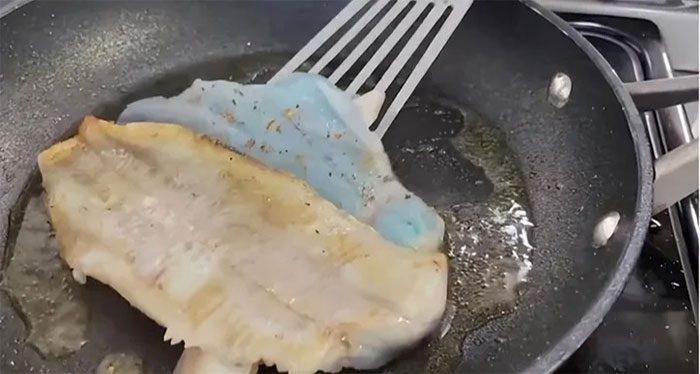
Regarding the quality of the meat, experts indicate that the flesh of the greenling is no different from that of common fish of the same species. This blue hue will also disappear when the fish is cooked. (Image: Fox News Network).
In fact, the greenling is also known as the sea cucumber, kelp salmon, or sea salmon, found along the Pacific coast in the Bering Sea of Alaska and down to southern California, USA. There are also reports of similar long-bodied fish found north of the Sea of Japan.
Current information suggests that their lifespan can reach up to 11 years, and the largest individuals can grow up to 60 cm and weigh around 83 kg. They exhibit orange to red spots on both sides of their bodies, with dark stripes and spots on their fins, and their mouths are blue. However, these colors can change according to their surroundings, similar to how octopuses change their body color to blend in.
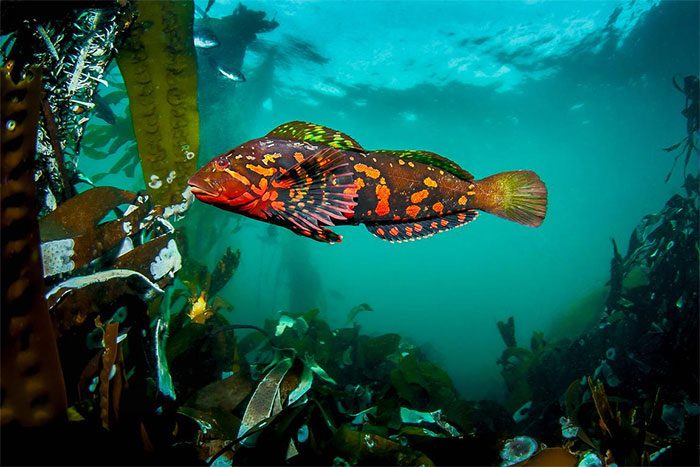
Scientists are unsure why greenlings have blue pigments in their tissues, but they know that this color occurs due to the fish producing biliverdin, a green bile pigment. (Image: Zhihu).
As for why this fish species has blue pigments in its flesh, scientists have not been able to provide a clear explanation, but they know that this species secretes biliverdin, a green bile pigment.
According to research from Oregon Sea Grant, a marine research organization, this species has a diverse diet and will eat anything it can find, including everything from invertebrates (like crabs, plankton, and crustaceans) to fish, eggs, and algae.
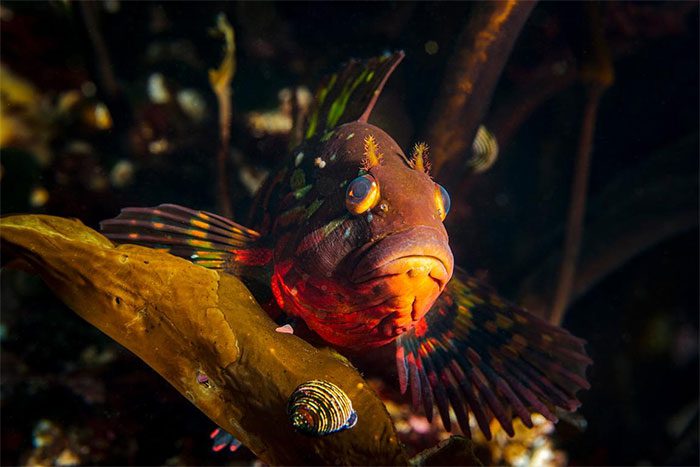
Greenlings are not the only species with blue flesh. The lingcod, which typically reaches a body size of 70 cm and can even grow up to 1 m, also has blue flesh. However, statistics indicate that about 20% of individuals of this species have blue flesh, while the typical flesh of lingcod is pale white. The reason lies in their diet, which often includes plant materials rich in chlorophyll. (Image: Zhihu).
The greenling is very rare, but this is not because they are at risk of extinction; in fact, scientists cannot estimate their population in the wild. Additionally, their rarity is due to their excellent camouflage skills and cautious living habits.
The greenling typically inhabits kelp beds and offshore rocky areas, which have complex terrain and many crevices, making it very challenging to find them when they are hiding. Furthermore, greenlings will change color according to their natural environment; they do not stick to one area but will move their habitat as needed. For instance, when they see large animals like humans, they will quickly flee.
This species does not live in schools but is solitary, which further complicates the search for them. Therefore, they remain mysterious and elusive to researchers, divers, and fishermen.

















































